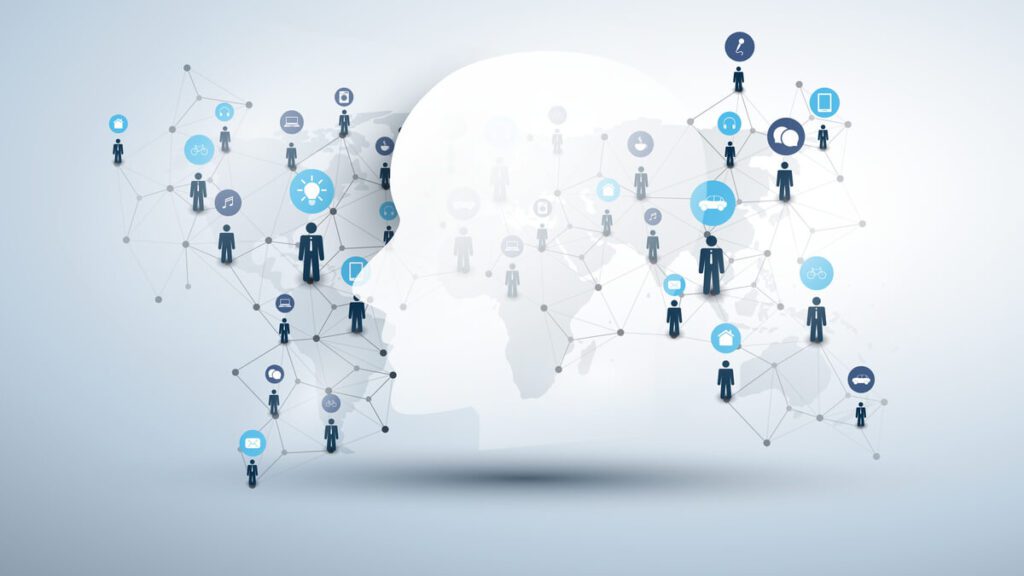5 ways AI will empower human resources

According to the Gartner 2019 Artificial Intelligence Survey, 17 percent of institutions use AI-based solutions in their HR function and another 30% will do so by 2022. The aim is for algorithms to replace human brain and decision-making for hiring, firing, scheduling and promoting. “AI will automate 1.8 million people out of work this year in parallel with helping create 2.3 million jobs by the same year. That’s an addition of 500,000 new jobs.”
However, these statistics also recognize that AI won’t eliminate the human workforce. Human involvement will always be essential but the understanding that human work is going to be more productive with the assistance of AI, is key. Here’s how AI will empower human resources in 5 significant ways:
1. Improving the recruitment process and time-to-hire
52% of recruiters say screening candidates from a large applicant pool is the toughest part of recruitment. Instead of letting recruiters and HR professionals go through and filter candidates out from a mountain of hundreds and thousands of resumes, recruiters can use AI to carry out competency identification, skills matching, labor market analysis, and bias detection in job descriptions.
Artificial intelligence will remove biases away from the hiring process and will reduce the time to hire by giving the option for HR executives to use chatbots to communicate with candidates before scheduling interviews. Therefore, AI has come a long way to make the recruitment process faster and simpler without needing to automate the cycle completely.
2. Motivating employees
AI is leaving its mark in many areas such as helping with employee retention according to recent studies. This problem accounts for 57% of companies, which is why implementing AI in human resources will detect the possibility of staff members leaving the firm by checking information related to pay-scale, employee experience, attrition rate, time in role, performance, etc.
How do they know when employees are looking out for other opportunities? By monitoring their browsing patterns, outgoing e-mails, and keystrokes. This can help HR identify reasons why they are planning to leave and take preventive measures to curb this consideration.
3. More efficient training and development
Training is an integral part of updating workforce skills in order to stay ahead of the competition. AI can be implemented by the companies with the aid of AR and VR to train their team, thus resulting in higher performance levels and a better overall job experience for the employee.
The aim of HR is to build, maintain, and improve human relationships in institutions, while the constant need for human interaction in the HR process opens the door for the implementation of AI.
“AI is an accelerator – it allows us the ability to ingest a variety of data and provide context to a decision-maker or employee or business leader. It allows us to deliver the right intelligence in the moment and achieve Personalization at scale.” Tom Stachura, Vice President, Talent Solutions & People Analytics, IBM.
4. Data-backed resources
If employees have problems with long working hours or any other issue, HR sets out to improve the way they monitor their staff by analyzing survey data or social media behavior etc. Instead of using surveys to get such information, companies can use Voice of Employees (VoE) platforms which in turn uses AI to manage these processes.
This pattern can pave the way for companies to utilize the data they already have access to in order to take the necessary measures and prevent employees from experiencing high levels of stress at work.
5. Improving learning and development programs
The next couple of years will witness a big rise in the adoption of AI in learning and development, which will contribute to the creation of more flexible learning programs that are able to meet the individual needs of an employee. In parallel, they will use data and analytics in a broader way to show how adopting AI can have an impact on businesses.
“Learning and development has to not only teach people AI skills and digital dexterity, but also prepare employees for new roles that will undoubtedly require more human skillsets: analytical, strategic, critical thinking, cultural awareness, emotional intelligence,” Elizabeth Greene, Director of Global Learning and Development at ON Semiconductor, was quoted as saying.
